SINGAPORE — Seventeen men have been confined for the past 20 days in a cluttered room about one-third the size of an average tennis court. The men, like hundreds of other migrant workers living in Kian Teck Crescent dormitory in the far western reaches of Singapore, are only permitted to leave to use the communal toilet or shower facilities down the hall. Food is delivered to them twice a day, left at the stairwell for them to collect. There is no Wi-Fi access and no space to exercise or engage in recreational activities.
One of them, a 29-year-old construction worker from India who isn’t revealing his real name in this article to protect his ability to work, said most of the men in his room have spent the past few weeks sleeping their days away — only stirring when they hear the ambulances arrive, which lately has been four or five times a day, to take their friends and co-workers to hospitals and isolation facilities to be tested and treated for COVID-19.
“Staying here is very stressful,” the worker said over the phone on Wednesday, a day after nine of his neighbors were taken away for testing. “Every day, there are more people getting sick. We keep thinking, maybe it will be passed to us also. We are very worried.”
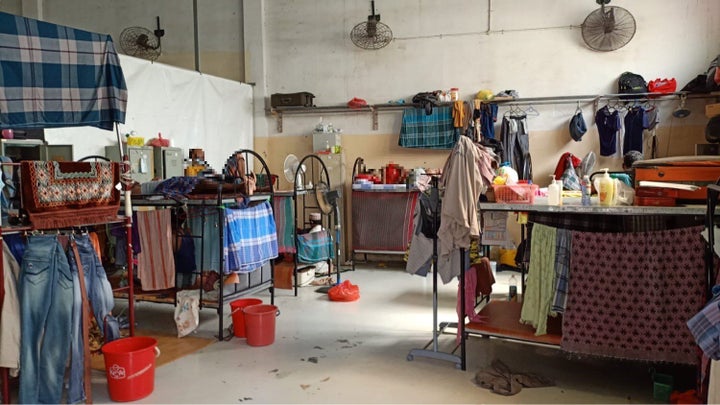
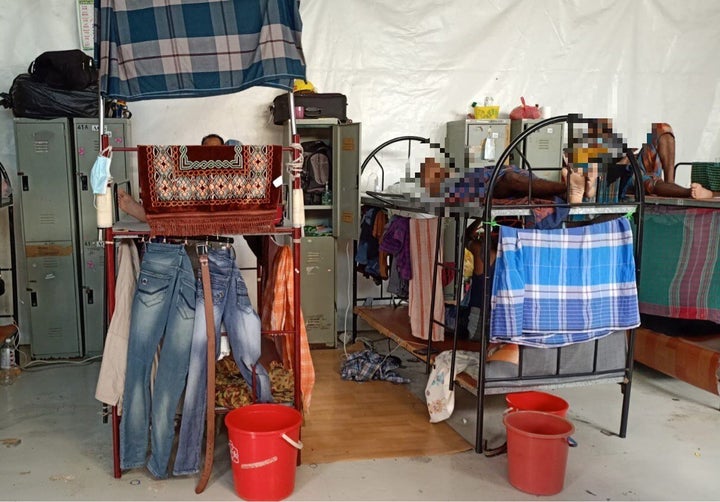
The man is one of an estimated 300,000 low-wage migrant workers who have been quarantined in Singapore in recent weeks amid a staggering surge of coronavirus cases in a country once considered the world’s gold standard of containment. A majority of the new cases have occurred in crowded worker dormitories like his.
More than 11,100 people in Singapore have tested positive for the coronavirus, and over 9,000 of these cases have been linked to worker dorms.
Fatalities have remained relatively low in Singapore. So far, 12 people have died of complications from the coronavirus, none of them migrant workers.
The ballooning number of cases has served to highlight the terrifying transmissibility of COVID-19, particularly in places like dorms and nursing homes where people are living in close quarters — and the need for countries to remain vigilant to new outbreaks, even when the infection rate appears to slow.
The surge has also laid bare the striking inequality endured by migrant worker communities in Singapore, a world financial center off southern Malaysia that ranks among the world’s 10 richest countries based on gross domestic product per capita. The unequal conditions for migrant workers is so stark that one activist described their reality as a “parallel universe” from that of other Singapore residents.
Kirsten Han, a Singaporean journalist, put it another way in a recent op-ed in The Washington Post: “The reality that COVID-19 so harshly reveals is that there has long been two Singapores: one for citizens, long-term residents and expatriates, and one for the low-wage migrant workers who provide the back-breaking labor upon which Singapore gleams.”
The worker who spoke with HuffPost said his family lives in the city of Madurai in Tamil Nadu. He has worked in Singapore for nine years, mostly in the construction industry. After graduating from college with a bachelor’s degree in computer applications, he was unable to find a decent job in Madurai, so he paid a recruitment agency in Singapore to help him find a job here.
Christine Pelly, an activist with local nonprofit group Transient Workers Count Too, said most low-wage migrant workers must pay fees ― often many times a worker’s monthly salary ― to agents before they’re able to find work in Singapore.
There is no federal minimum wage in Singapore and, according to Pelly, monthly basic salaries for these workers can start as low as 400 Singapore dollars ($280). The median monthly income for a Singaporean is about SG$4,500.
“They need to work punishing hours of overtime to get more than that,” Pelly said.
The worker who spoke with HuffPost said he forked over SG$7,000 ― almost $5,000 ― to his agency. For his first job here, he was paid a monthly base salary of SG$400, he said ― and his employer would dock SG$130 of that for his food.
Despite his background in computers, the agency found him a job as a rebar worker, fashioning steel bars to reinforce concrete for construction.
He said he often worked 10 to 12 hours a day. The work left him perpetually exhausted.
“It was very hard work. I was very sad. I never did hard labor like that before,” he said. “Every day I start to cry. I wanted to go home.”
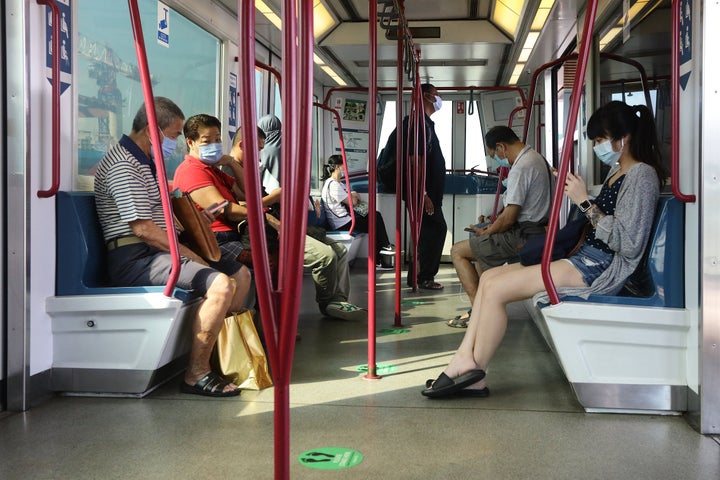
About 1.1 million low-wage migrant workers live in Singapore, accounting for about 20% of the country’s total population of 5.6 million. Some 300,000 of those workers — most of whom work at shipyards, construction sites or in the landscaping and cleaning industries — live in huge dormitories located on the outskirts of the city. Each of these dorms house hundreds or even thousands of workers, many from India and Bangladesh, in cramped and crowded rooms.
The worker said more than 200 men live on his floor. All share a single common area and one communal toilet and shower facility.
Local media have previously reported on the sometimes horrific conditions endured by workers at these dorms, including overflowing urinals, cockroach infestations and rotten food.
Given these conditions and the virulence of COVID-19, local activist groups, including Transient Workers Count Too and the Humanitarian Organization for Migration Economics, began sounding the alarm in March about the coronavirus risk for migrant worker communities.
In an open letter published on March 23 in The Straits Times, Singapore’s most-read English paper, Transient Workers Count Too warned the government of a possible outbreak in worker dorms.
“Currently, foreign workers are housed 12 to 20 men per room in double-decker beds,” Deborah Fordyce, the nonprofit’s president, wrote in the letter. “They are transported to work on the back of lorries sitting shoulder to shoulder. Neither of these conditions conforms with social distancing. The risk of a new cluster among this group remains undeniable.”
The Singapore government, which at first had been praised by medical experts for its rapid and methodical response to the initial wave of coronavirus infections, has since come under scrutiny for its apparent slowness in responding to the spread among migrant workers.
Lawrence Wong, Singapore’s minister for national development and co-chair of the country’s coronavirus task force, told reporters on April 9 that the country could not have anticipated the swell of infections in worker dorms.
“Unfortunately, we do not have the luxury of the benefit of hindsight,” Wong said, adding: “The virus is moving so quickly. If I’d known, I would have done things differently. But no one can tell the next step.”
As Pelly, of Transient Workers Count Too, noted, this isn’t the first time that viral outbreaks have occurred in migrant worker dorms. In 2008, a worker from Bangladesh died and 10 were hospitalized after a chickenpox outbreak. At the time, workers accused their employer, an oil and gas engineering company, of failing to help sick employees.
The spread of diseases like measles, rubella and Zika also have been reported in dorms in recent years.

One of the first COVID-19 cases in Singapore — identified by the government as “Case 42” — involved a 39-year-old migrant worker from Bangladesh. He was first hospitalized in early February and spent more than two months in the intensive care unit battling for his life.
Singapore Prime Minister Lee Hsien Loong acknowledged the worker’s plight during a televised speech to the country on Wednesday.
“We never gave up on him,” Lee said of the worker, whose wife recently gave birth to a baby boy in their hometown in Bangladesh. “Last week, his condition stabilized … [and] he was transferred out of the ICU.”
“With some luck, he should be able to see his newborn son soon,” Lee added.
Pelly said Case 42 has been a red flag for activists.
“Yes, we were worried,” she said. “We knew how this disease spreads, how infectious it is, and we knew the conditions under which these workers live. We knew also that workers often go to work even when they are ill because they think their pay will be docked otherwise. We’ve seen cases where workers have been on medical leave but their employers have asked them to choose — do you want [the day off] or do you want your salary? So they try their best to not take a day off.”
In her Washington Post op-ed, Han suggested the problem had not been a lack of foresight by Singapore’s government ― but rather the invisibility of the migrant worker population.
“Singapore’s government is often praised, domestically and internationally, for its planning and foresight — and, in the past few months, particularly for its response to the coronavirus pandemic,” she wrote. “But recent developments have demonstrated that you can’t have foresight for things you refuse to see.”
Han pointed out the stark divide between the rights enjoyed by immigrants on work visas for white-collar jobs, compared to those afforded to low-wage migrant workers.
White-collar expatriates “have rights to family reunification and paths to eventual long-term residency and citizenship, low-wage work permit holders have no such options,” she wrote. “They aren’t even allowed to marry Singaporeans or permanent residents in Singapore without first seeking permission from the government.”
As Pelly put it: “Transient workers live in an almost parallel universe ― and yet are so much apart of our lives.”
Han noted that this glaring division is even reflected in the way that coronavirus cases have been classified here.
Every day, the government sends out text messages to residents with COVID-19 updates. New cases are divided into two groups: “cases in community,” and cases among “work permit holders.”
“I think splitting the infections into categories along these lines, and telling the population that they are ‘two separate infections’ (as if COVID-19 cares about what passport you hold!) is really problematic,” Han explained to HuffPost in an email. “It feeds into this whole idea that ... migrant workers aren’t really part of the community, and continues to feed the idea that they are merely ‘guest’ workers and don’t really count when it comes to discussions about the local population and community.
“But as COVID-19 shows us, they very much need to be considered alongside the rest of the local community, because our lives overlap,” she continued.
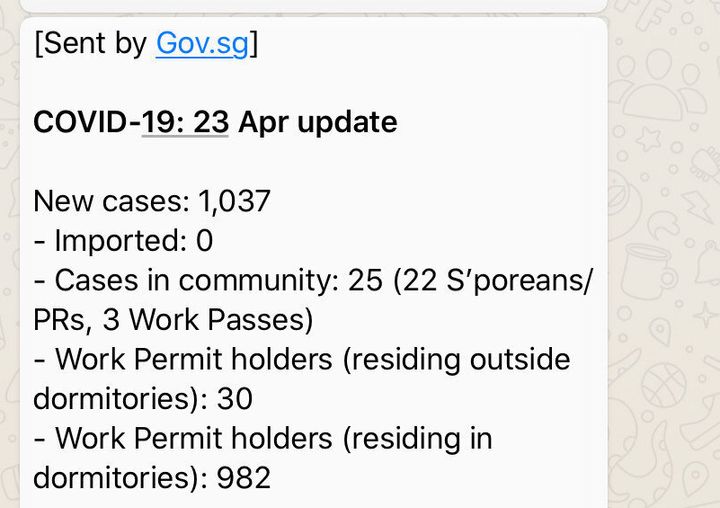
Employers and dorm operators must also be held accountable for the workers’ plight, said Shafeeqah Ahmad Rosli, a spokesperson for Humanitarian Organization for Migration Economics.
“They are complicit in the surge of infection rates in the dormitories for not making improvements in migrant workers’ accommodation,” Rosli said.
Some activists also point to underlying xenophobia among Singaporeans directed toward migrant workers. Some social media have drawn scrutiny for incendiary comments, including suggestions that sick workers should be deported to their home countries or that dorm cases shouldn’t be included in Singapore’s coronavirus tally.
A viral letter published earlier this month in the forum section of Lianhe Zaobao, the country’s largest Chinese-language paper, suggested migrant workers were partially to blame for the outbreak because of their “bad personal hygiene habits.”
Amid the new surge in cases, Singapore has tightened its pandemic restrictions.
On Wednesday, Prime Minister Lee extended Singapore’s “circuit breaker” period, essentially a lockdown but with a more palatable name, until June 1. Under the rules of the circuit breaker, which kicked in on April 7, all businesses not considered essential have been shuttered. It is also illegal to mingle with anyone who doesn’t live in the same household, and those who have been identified as having been potentially exposed to the coronavirus must abide by quarantine orders or face severe punishments.
Masks have to be worn outside the home, and residents have been urged to go out alone if they exercise or conduct essential activities. Earlier measures like meticulous contact tracing and strict border controls also continue.
All migrant workers living in dorms are no longer allowed to leave the premises, and large-scale testing is occurring to identify asymptomatic cases.
Lee has vowed that Singapore will care for all workers’ welfare.
“To our migrant workers, let me emphasize again: we will care for you, just like we care for Singaporeans,” he said this week. “We will look after your health, your welfare and your livelihood. We will work with your employers to make sure that you get paid, and you can send money home. And we will help you stay in touch with friends and family.”
For his part, the worker interviewed by HuffPost said he believes the Singapore government has done a good job responding to the COVID-19 crisis.
But if he had a choice, he would rather be back home.
“In this situation, I would like to stay with my family. We don’t know what can happen to us. In the future, the virus could spread to us also,” he said. “I miss my family a lot.”
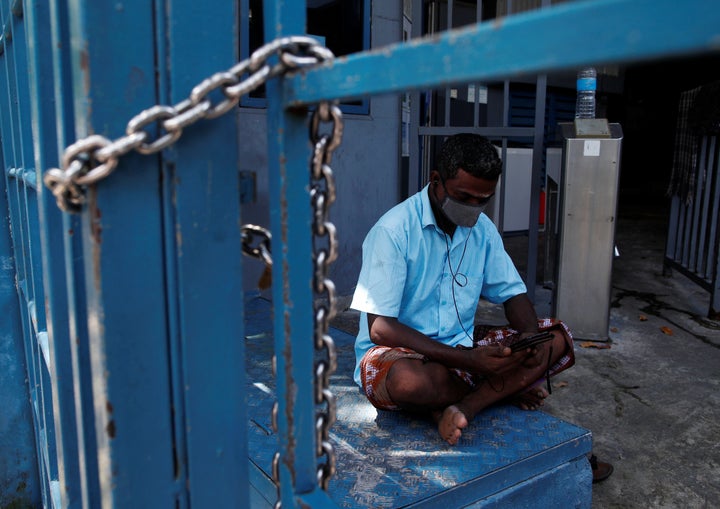
Activists say they hope the pandemic will force a reckoning ― not just in Singapore, but globally, of the urgent need to address the lack of basic social services and support for minorities and other vulnerable communities.
“This pandemic has exposed the glaring need for social safety nets for the most vulnerable,” Pelly said. “There’s such a lack of access ― to health care, to social support ― for people who are unequal, who are disempowered, not just transient workers here in Singapore, but across the world.”
Han said she hopes this crisis will compel Singapore to engage in a “much more fundamental reflection on our relationship and attitude towards these migrant workers and the system that they’re locked in.”
“Is it really right to be treating them so differently from everyone else, including other immigrants?” she asked. “Why are we okay with migrant workers living and working in conditions that would be unacceptable to the rest of us?”
- Stay up to date with our live blog as we cover the COVID-19 pandemic
- What happens if we end social distancing too soon?
- What you need to know about face masks right now
- How long are asymptomatic carriers contagious?
- Lost your job due to coronavirus? Here’s what you need to know.
- Everything you need to know about coronavirus and grief
- Parenting during the coronavirus crisis?
- The HuffPost guide to working from home
- What coronavirus questions are on your mind right now? We want to help you find answers.
- Everyone deserves accurate information about COVID-19. Support journalism without a paywall — and keep it free for everyone — by becoming a HuffPost member today.
